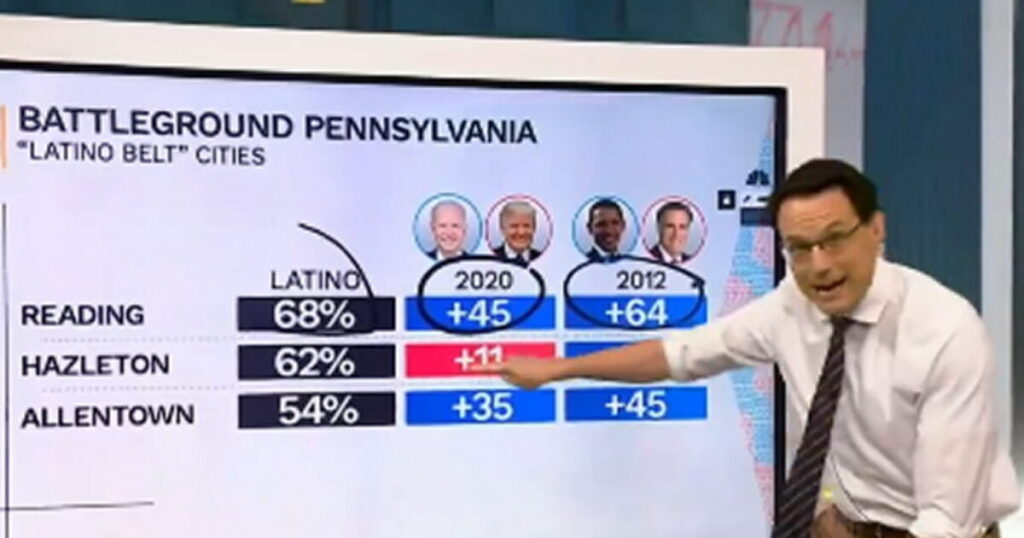In the race for the White House in 2024, Pennsylvania has emerged as a focal point of contention between the two major political parties, with both sides pouring substantial resources into the state. The changing demographics and voter sentiment in Pennsylvania are significant indicators that could sway the ultimate outcome of the presidential election. Historically a battleground state, Pennsylvania has shifted towards the Republican side since the 2020 election, with increases in support even within traditionally Democratic strongholds like Philadelphia. This trend highlights a potential shift that could impact campaigning strategies as both parties vie for the critical electoral votes the state offers.
Recent analysis from NBC News reveals that poll numbers suggest former President Trump is gaining traction, especially among voters in the so-called “Latino Belt” in eastern Pennsylvania. This area, which includes counties surrounding Philadelphia, has seen an important shift in political alignment. Key counties such as Delaware, Chester, Montgomery, and Bucks collectively contribute a significant portion of votes in statewide elections. The demographic changes and a growing Republican presence have created a landscape where the traditional Democratic margins are increasingly under threat, an alarming sign for Democratic candidates focusing on retaining their voter base.
The suburbs of Pennsylvania, particularly those with high concentrations of college-educated voters, have been the primary battleground for both parties. While Democrats were able to secure victories in these collar counties during the previous elections, there is newfound concern regarding the effectiveness of their strategies in maintaining momentum. With Vice President Kamala Harris potentially leading the Democratic charge, the question remains whether she can improve upon previous Democratic performances in these crucial regions. The increasing Republican support suggests that Harris’s ability to connect with suburban voters, particularly women and minorities, could be paramount for her campaign.
Trump’s strategy appears to focus on consolidating support in both suburban and rural areas of Pennsylvania. While the suburbs may present challenges, rural counties have seen a noticeable shift toward the Republican Party. The growth in rural support is complemented by Trump’s efforts to tap into the rapidly expanding Latino population in urban areas within the state. Cities like Reading, Hazelton, and Allentown are pivotal in this regard; despite being historically Democratic, these cities are now showing signs of becoming more competitive territory for Trump, as Latino voters begin to express preferences that might deviate from traditional party allegiance.
The data underscores a significant erosion of the Democratic advantage in these key cities. For instance, Reading, which boasts a 70% Latino population, saw Joe Biden win by a substantial margin in 2020; yet, this margin has significantly decreased compared to previous elections. Similar trends are evident in Hazelton and Allentown, where Trump’s appeal among Hispanic voters appears to be growing, thereby complicating the Democratic narrative of unassailable support from minority communities. This trend presents a newfound vulnerability for Democrats in what was presumed to be safe districts, emphasizing the need for adaptive campaigning strategies.
Ultimately, while Trump may have alternative paths to secure 270 electoral votes without Pennsylvania, winning the state would substantially enhance his prospects. The current political climate in Pennsylvania, characterized by emerging Republican strengths and shifting voter demographics, indicates a highly competitive landscape for the upcoming election. Both parties are aware that the outcome in Pennsylvania could very well determine the presidency, intensifying their focus and investments in the state as 2024 approaches. The changing fortunes in the Latino Belt may play an essential role in this narrative, potentially redefining electoral strategies and voter engagement methods as the race heats up.

